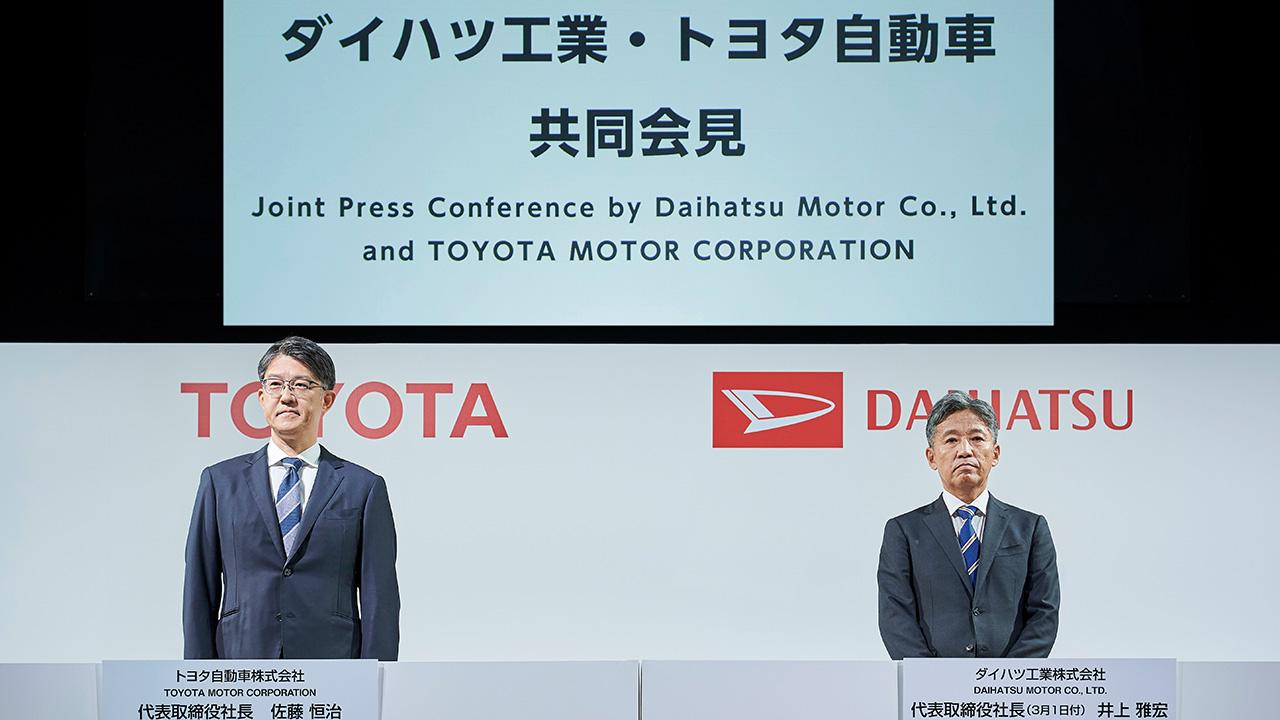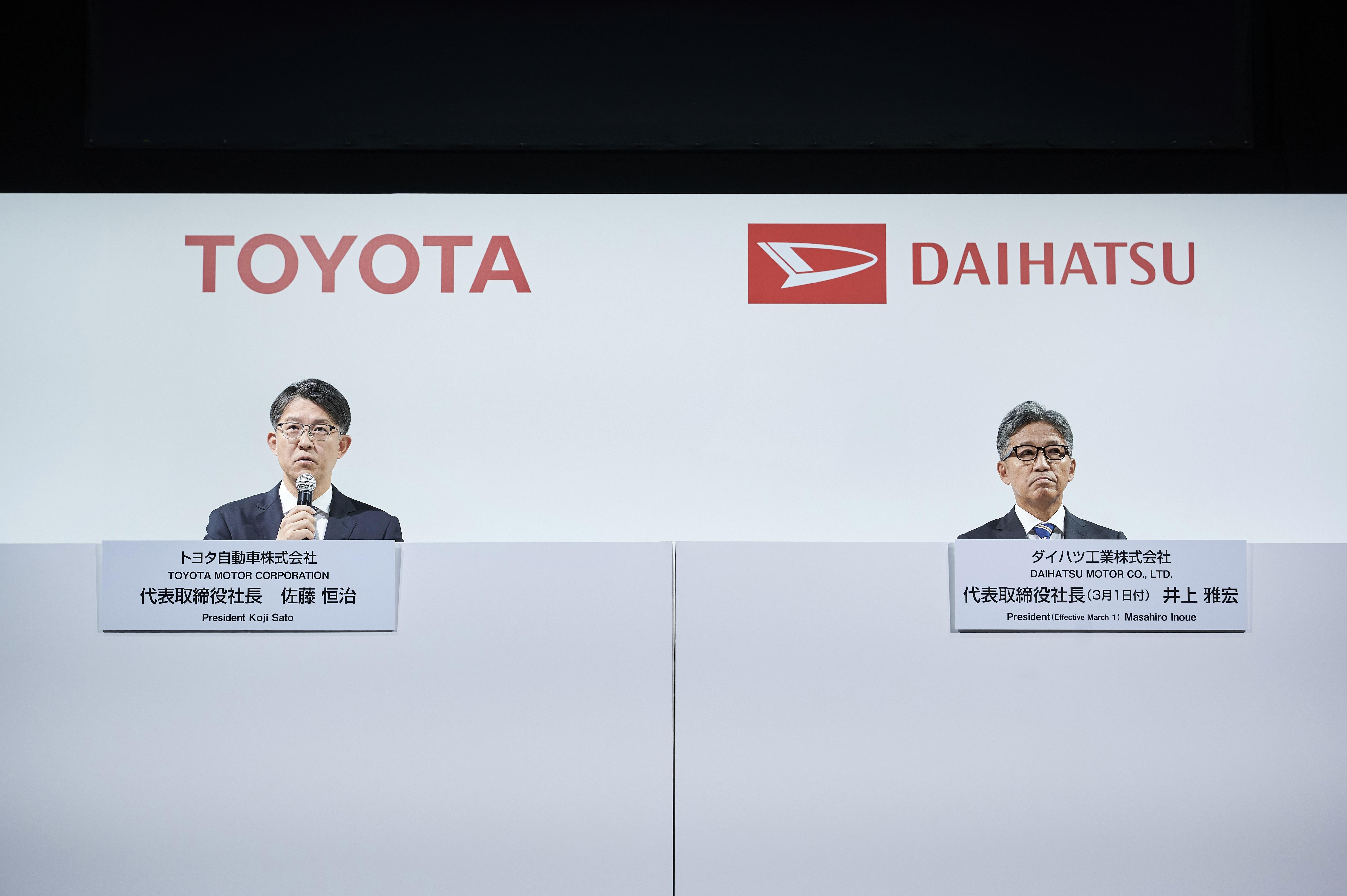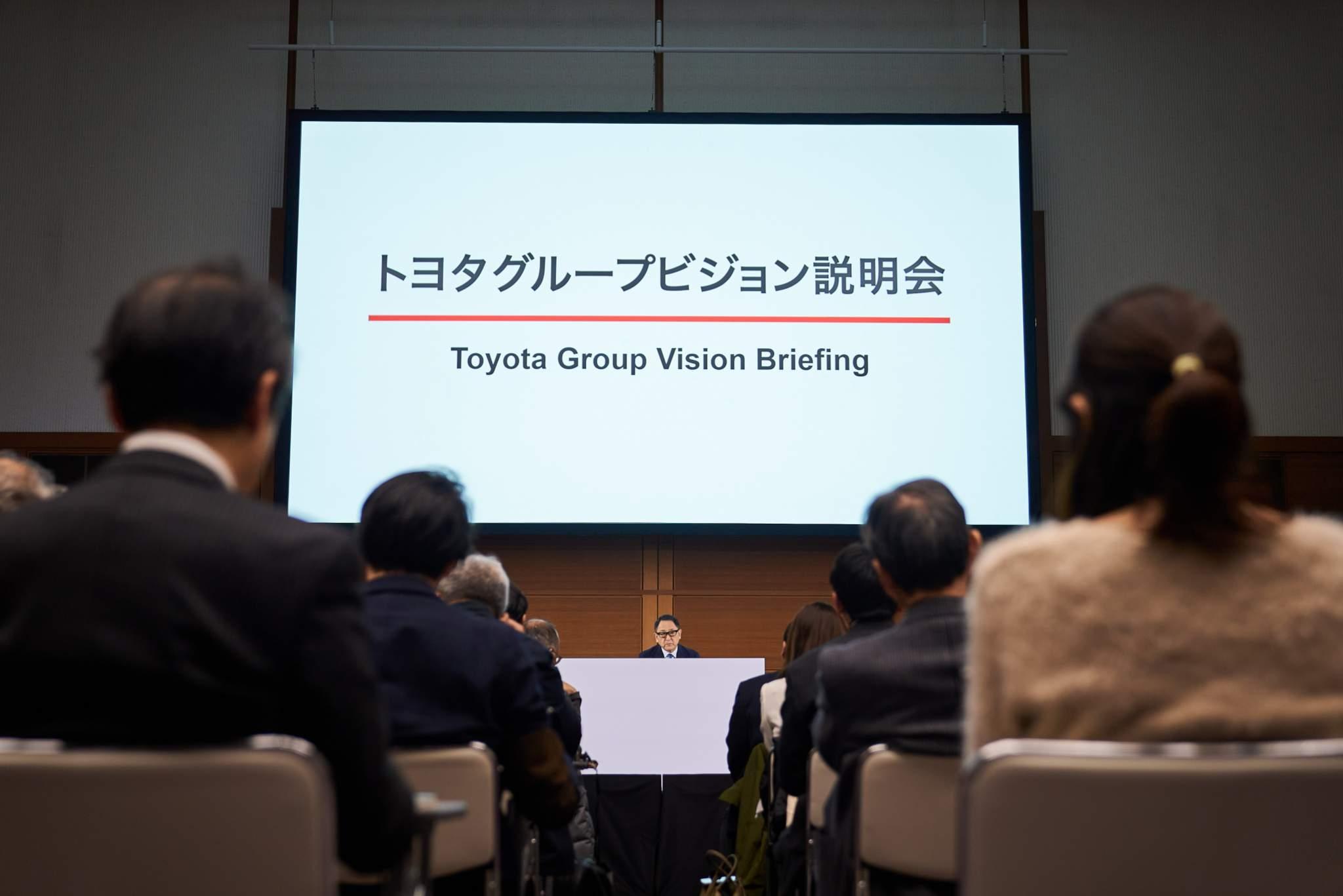
Toyota and Daihatsu held a press conference to announce Daihatsu's new leadership. We unpack the comments made at the event to find out how the incoming team plans to revitalize the company.
Working toward revitalization
Will slowing down the pace to prevent recurrence make Daihatsu less competitive? How do you view the balance between rebuilding and competitiveness?
President Sato

Competitiveness is a key factor for a company. At the same time, corporate management is a marathon, and we take a long-term view.
When your legs are cramping because you went too fast, rather than keeping up the pace, I believe you need to re-establish a form that will enable you to do the job correctly, even if it means slowing down. This means we will drop our pace in the short term.
The key, however, is what we do in that time, and we will reassess our strengths.
I believe that Daihatsu’s strengths are twofold. One is a dedication to the smallest aspects of monozukuri. From production to purchasing systems, the company has a true dedication to the fundamentals.
I think all of us need to re-examine this strength and work to rebuild our organization for the future.
The other facet is close engagement with customers. Daihatsu has an intimate understanding of people’s lives and is committed to delivering what they truly need.
For example, the over 30,000 nationwide dealership staff provide a voice for our customers.
We must rebuild in a way that ensures Daihatsu’s network, which takes in feedback from every corner of the country, can properly serve its function in creating products.
If you look only at development timeframes, it may look like a temporary slowdown, but we will use the freed-up capacity to regain our strengths and carry out the job correctly.
Incoming President Inoue
I spent a long period on the front lines in overseas sales. I’ve seen firsthand that bringing out products one after another does not necessarily lead to greater sales volumes—it is important that the changeover happens when needed, at the right time.
Also, the changeover cycle differs between the passenger cars that customers come to buy and the commercial vehicles we make available at low cost.
While working to maintain our competitiveness by optimizing these cycles, we recover our investment through a combination of sales and services. I think it’s crucial that we keep this process going smoothly.
There is also the worry that a slimmed-down Daihatsu will make Toyota’s compact cars less competitive. How will you compensate for this? Also, amid the succession of irregularities at Group companies, how must Toyota itself change?
President Sato
When it comes to the competitiveness of compact cars in Asia, Toyota cannot match Daihatsu’s carmaking. In this case, bigger does not mean better.
This carmaking is made possible by Daihatsu’s expertise and continued dedication, for which we must not lose respect.
Regardless of the business’s configuration, Daihatsu’s strength lies in developing and producing compact cars, and this will continue to grow.
From planning and development to production, distribution, and sales, each function has its own strengths and weaknesses.
Consulting with incoming President Inoue, I want to thoroughly discuss each element of the Toyota Group’s strategy in Asia.
As for how Toyota must change following these Group irregularities, this was outlined in Chairman Toyoda’s recent vision presentation.

“Return authority to the genba and commit to genba-led management.”
We will establish relationships that make it easy for people to speak up. Working under the banner of our guiding vision, those of us responsible for execution will work together to turn it into reality.
To do that, we need to think about how to move forward, one action at a time.
The irregularities are not a simple problem, but a complex mix of various issues.
Since there are no clear-cut solutions, we will work closely with Group company leaders to carefully discuss and identify a path toward improvement. That is the mindset behind our actions.
Following the questions, incoming President Inoue shared his resolve in leading Daihatsu.
Incoming President Inoue
I don’t believe there are many countries in the world that handle the entire automobile production business, from parts to finished vehicles.
The auto industry has a very broad and comprehensive reach. As we have experienced, sustainable growth is not possible without earning the empathy of the public and government.
I feel that Toyota and Daihatsu have complementary strengths and weaknesses.
With monozukuri that harnesses the Group’s collective capabilities, we will grow sustainably by creating jobs and earning the firm support of people across Japan, Asia, and emerging countries. I feel that this is the only way forward.
I am committed to moving forward in dialogue with Mr. Sato and the Toyota Motor Corporation.
As the head of Toyota’s operations in Latin America, last year Inoue made the following comments about business in the region during an interview for Toyota Times.
Inoue as Chief Executive Officer of Latin America & Caribbean Region
At Toyota, we have a “home & away” concept, in which “away” refers to distant regions such as Latin America or Africa, where the cultures are different and Toyota’s strengths do not easily translate.
While this may not be the best choice of wording, at the time, President Toyoda explained that “away regions require their own strategy—even if we aren’t number one, we can compete as second or third.”
I feel that Toyota’s position in South America still makes us the away team.
Turning this into our home turf is about more than just ability. We need to get the governments and people of Latin America on board and working with us.
We need to be more localized and loved by the community.
The words “dialogue” and “empathy” came up time and again throughout the press conference. Ever since incoming President Inoue was appointed to oversee Latin America, these cherished principles have continued to guide his actions.

